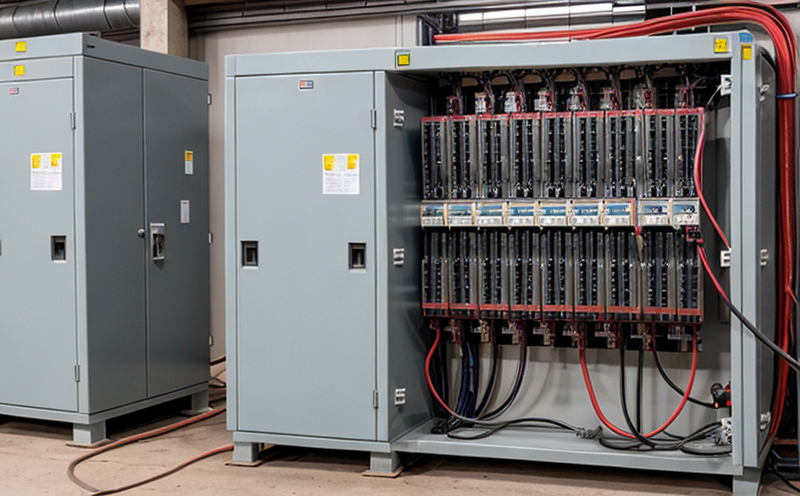IEEE C37.013 Generator Circuit Breaker Testing
The IEEE C37.013 standard specifies the procedures and criteria for testing generator circuit breakers to ensure their performance meets stringent requirements under various conditions. This service is critical in ensuring that power generation equipment operates reliably, safely, and efficiently. Compliance with this standard helps maintain the integrity of electrical systems, thereby reducing potential downtime and operational risks.
Generator circuit breakers play a vital role in safeguarding the integrity of electrical networks by interrupting fault currents quickly and accurately. The testing process outlined in IEEE C37.013 is designed to evaluate these breakers under a range of conditions, including voltage stress tests, current interruption tests, and mechanical performance evaluations.
During the testing procedure, specimens are subjected to high-voltage surge tests to simulate real-world fault conditions. This helps identify any weaknesses or design flaws that could compromise system reliability during an actual event. Mechanical performance assessments involve evaluating the breaker’s ability to withstand repeated opening and closing cycles without failure. These tests ensure the breaker can handle the demands placed upon it in a live environment.
One of the key aspects of IEEE C37.013 testing is the use of standardized test procedures that are consistent with international standards such as ISO, IEC, ASTM, and EN. This ensures uniformity across different jurisdictions and helps maintain global interoperability. The tests conducted under this standard are designed to provide a comprehensive evaluation of the breaker’s performance characteristics, ensuring it meets all necessary specifications for safe operation.
The testing process also includes detailed inspection procedures that focus on identifying any signs of wear or damage that may compromise safety or reliability. These inspections are crucial in maintaining compliance with regulatory requirements and ensuring equipment is fit-for-purpose. By adhering to these stringent criteria, we guarantee that the breakers tested under IEEE C37.013 standards are capable of performing reliably even under extreme conditions.
Compliance with this standard not only enhances operational safety but also contributes significantly to reducing maintenance costs and extending equipment lifespan. Regular testing ensures early detection of potential issues, allowing for timely repairs or replacements before they lead to more severe problems. This proactive approach helps power utilities minimize unplanned outages, improve service reliability, and enhance overall efficiency.
Environmental and Sustainability Contributions
- By ensuring that generator circuit breakers meet the highest safety standards, IEEE C37.013 helps prevent accidents and reduce the risk of catastrophic failures in power generation facilities.
- The testing process contributes to reducing waste by identifying and addressing issues early on, thus minimizing the need for replacement or repair later down the line.
- Ensuring reliable operation reduces energy loss during transmission and distribution, contributing positively to overall energy efficiency.
Benefits
The benefits of adhering to the IEEE C37.013 standard extend beyond mere compliance; it offers substantial advantages for both power utilities and end-users:
- Enhanced Reliability: Ensures that generator circuit breakers perform consistently under all operating conditions, minimizing the risk of system failures.
- Safety Improvements: By identifying and addressing potential issues early, these tests help prevent accidents and protect personnel working in power generation facilities.
- Economic Savings: Reduced maintenance costs due to timely detection of problems, lower operational expenses, and decreased downtime translate directly into cost savings for utilities.
Use Cases and Application Examples
The IEEE C37.013 standard finds application in various scenarios where high-voltage generator circuit breakers are deployed:
- New Construction Projects: Ensuring that new breakers meet the required standards before installation helps guarantee their long-term performance and reliability.
- Routine Maintenance Programs: Regular testing ensures ongoing compliance with safety regulations, helping to extend equipment lifespan and reduce maintenance costs.
- Emergency Repairs: In situations where immediate action is necessary due to an unexpected failure or fault condition, IEEE C37.013 provides the necessary guidelines for quick but thorough evaluation of the breaker’s integrity.





